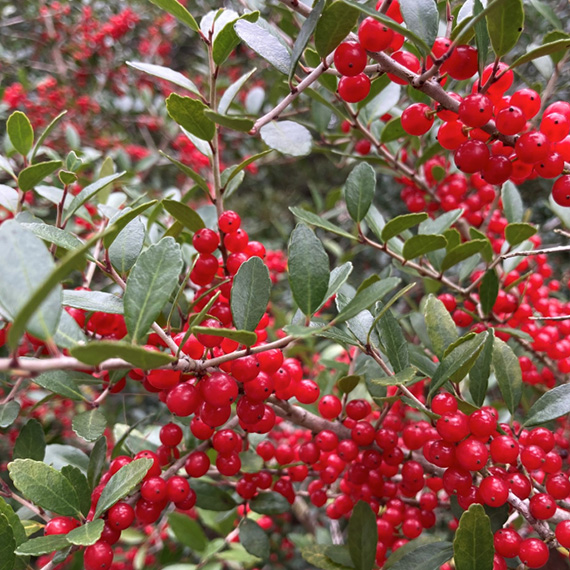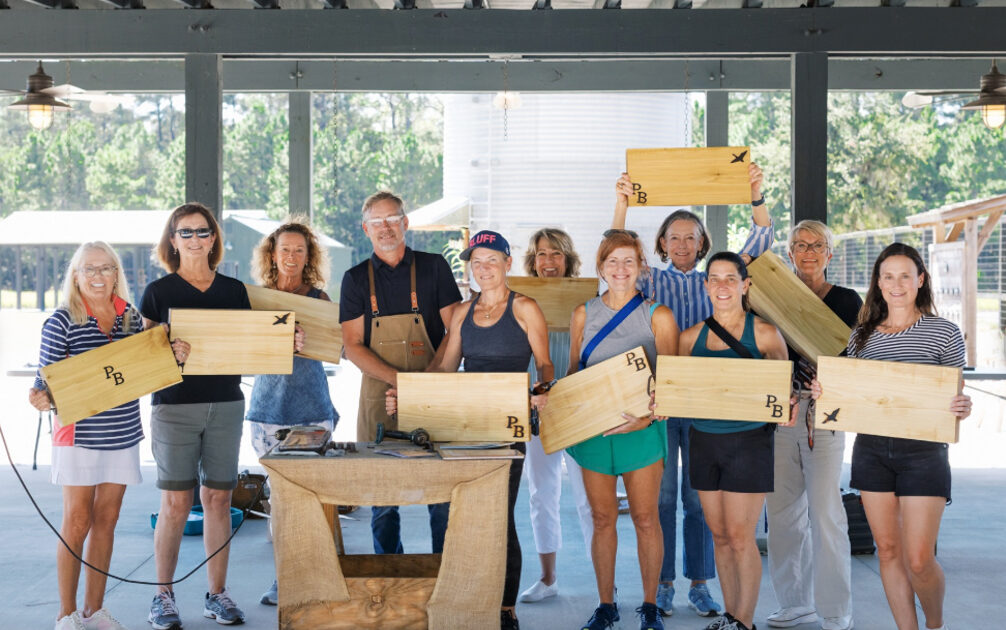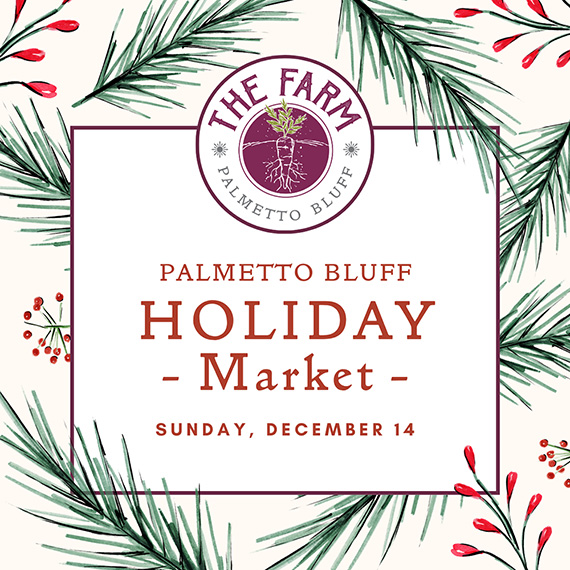Palmetto Bluff Real Estate Company Sales Office
Office Hours
Monday-Friday 9am - 5pm
Saturday 9am - 4pm
Sunday 12 - 4pm
Saturday 9am - 4pm
Sunday 12 - 4pm
At the age of 58, with a heart condition threatening to end his life at any moment, celebrated novelist John Steinbeck set out to find America. One of the first things he noticed was that the plural America of his youth, one in which the cadence of life and the words you used were defined by the region you call home, was just as close to fading away as he was.
“It seemed to me that regional speech is in the process of disappearing, not gone but going,” he wrote in his travelogue, Travels with Charley. “Forty years of radio and
20 years of television must have this impact.”
Fast-forward to the modern era, and you now have 90 years of television homogenizing the rich tapestry of American speech, erasing idioms such as New England’s “dropped egg,” the Midwest’s “on pump,” and the South’s “table tapper” (three terms that mean, respectively, a poached egg, something bought on credit, and an amateur preacher in their original parlance.)
But somehow, a handful of subtle regional differences have survived. Depending on which side of the Pennsylvania–New Jersey border you’re on, a group of people might be yinz or youse. Down here, they are y’all, which is, of course, the correct way to address a group. Going to a barbecue means burgers and hot dogs up north and pulled pork down south (which is another point in Southerners’ favor). And it may be helpful to consult a map before ordering an elongated sandwich, which can travel under the aliases sub, hoagie, grinder, hero, or Italian, depending on geography.
Which brings us to one of the deepest gulfs in American regional speech: stuffing vs. dressing.
On a purely superficial level, both words describe the same thing. Everyone has their own recipe (and everyone’s recipe is the best recipe there is), but universally, you take some crumbled bread; toss it with some melted butter, celery, and herbs; and bake it until you have the savory side dish that is all but mandatory at Thanksgiving.
And yet in the North, you’ll call this mouthwatering side dish stuffing. In the South, despite the name also referring to a salad topping, it’s dressing. So why does your position relative to the Mason–Dixon Line matter? Is this one of those simple mistranslations?
Whereas the difference between pop and soda, lightning bugs and fireflies, or sneakers and tennis shoes may come down to simple geography, there is an added twist when it comes to stuffing versus dressing: it’s not just where you are; it’s how you do it.
“I’ve never said stuffing in my life,” Jamie Deen said. As one of the “and sons” in Savannah’s famed Lady and Sons, he speaks from a position of authority. While people across the world first learned about the joys of Southern cooking from his mother Paula’s TV appearances, he learned it at the dinner table.
“Dressing comes in a pan. Stuffing is dressing that is stuffed in the cavity of a bird,” he said. “I think people that do that . . . bless their heart is what we say. As long as you use my mom’s recipe, you can call it what you want.”
Ah, but his mother’s recipe only muddies the waters.
As someone who has extended the appeal of Southern cooking outside our region, Paula Deen offers recipes for both stuffing and dressing on her website. Her “Classic Cornbread Dressing” uses the Southern staple of cornbread as a base with bacon grease an acceptable substitute for butter, while her “Southern Cornbread Stuffing” replaces the cornbread with white bread and saltines.
So clearly the differences between stuffing and dressing run far deeper than just the name. It’s not just about where you’re from. It’s not just about what you do with it. It’s not just about what you make it with. It’s all of these things.
And yet somehow, as with so many things in this great melting pot of America, it’s something we all agree on—or at least agree to disagree. Whether you cook it in a pan or in a bird, with bacon grease or butter, the end result is the same. It’s the side dish that always threatens to steal the spotlight. It’s the great common denominator that brings us all to the table together.
We like to think even Steinbeck would be glad to see one regional idiom standing strong, long after he was gone.
Read the original story in the Holiday edition of The Bluff magazine.

Warm, fragrant, and deeply comforting, Chef Beth’s Southern Sausage & Sage Stuffing is a holiday classic that brings together rich pork sausage, fresh herbs, and toasted bread for the ultimate savory side dish. Studded with green apples and aromatic vegeta...

As December settles over Palmetto Bluff, it brings softer light, cooler mornings, and the natural beauty of native evergreens and winter berries that define the Lowcountry landscape. Palmetto Bluff Conservancy’s Education and Outreach Manager, Aaron Palmier...

In 2025, Palmetto Bluff welcomed new neighbors and old friends, groundbreakings, and long-awaited openings. From inspired Club gatherings and elevated programming to the creation of our latest golf course, the year was defined by connection and excitement for ...

There is something serene about waking up to shimmering water, the stillness of the woods, or the sweep of marsh and sky right outside your window. Even without stepping outside, science shows that simply seeing nature from home can meaningfully improve mental...

The Ultimate Choice: Building vs Buying a Home in Palmetto Bluff For those searching for Palmetto Bluff homes for sale, this common question often arises: Should you choose an existing residence, or embrace the opportunity to build your own? While a complet...

A Complete Guide to South Carolina Winter at Palmetto Bluff South Carolina's winter is unlike any other on the East Coast. While many travelers search for “South Carolina winter” expecting cooler temperatures and limited outdoor options, the Lowcountry revea...

River Road: Where Lowcountry Beauty Meets Elevated Everyday Living Tucked gracefully between Wilson Village and Moreland Village, River Road is one of Palmetto Bluff’s most immersive communities. It's where the pace of life seems to soften, classic Southern ...

Sunday, December 14 | 9am to 1pmVillage GreenThe season’s most festive farmers market, the Holiday Farmers Market, comes to Wilson Village on Sunday, December 14, from 9am to 1pm. All are welcome to visit and experience the magic of holidays at the Bluff. The ...

Tucked amid whispering pines and overlooking a tranquil water trail, 11 Lyonia Street is where Lowcountry charm meets modern artistry. The newly built residence redefines Southern living with a balance of craftsmanship and calm. This is a home that feels both ...

The holiday season in the Lowcountry brings crisp air, oaks draped in twinkling lights, and laughter drifting from homes where families and friends gather once again. At Palmetto Bluff, the holidays are more than just a season; they’re a feeling of togethernes...
Learn about the Palmetto Bluff Conservancy and how we keep the vision of our land in place.
On land or water, there is an ever-evolving variety of activities.
We do not attempt to independently verify the currency, completeness, accuracy or authenticity of the data contained herein. All area measurements and calculations are approximate and should be independently verified. Data may be subject to transcription and transmission errors. Accordingly, the data is provided on an “as is” “as available” basis only and may not reflect all real estate activity in the market”. © [2023] REsides, Inc. All rights reserved. Certain information contained herein is derived from information, which is the licensed property of, and copyrighted by, REsides, Inc.